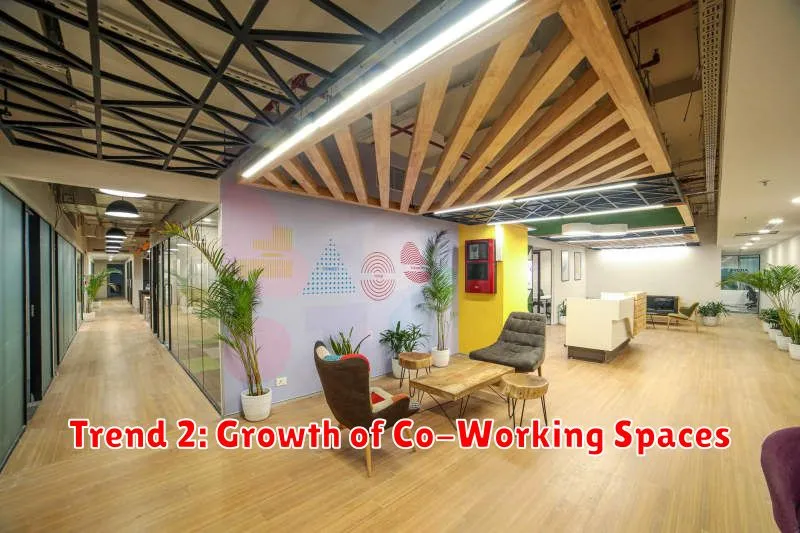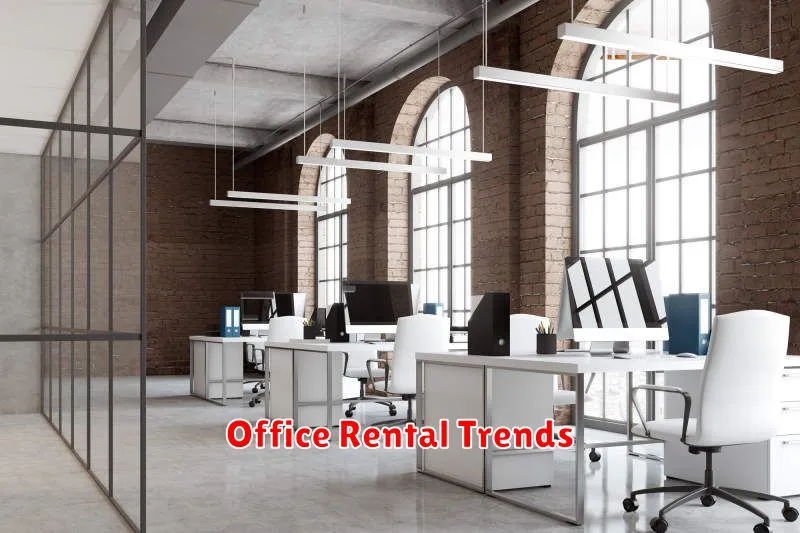Ready to navigate the ever-evolving world of office space? 2024 is shaping up to be a pivotal year for office rentals, with exciting new trends emerging that will redefine how we work. This year, you’ll see a surge in demand for flexible workspaces, a continued focus on employee well-being and sustainability, and innovative approaches to hybrid work models. In this post, we’ll explore the top 5 office rental trends for 2024, giving you the insights you need to make informed decisions about your company’s workspace. Get ready to discover how to optimize your office space for peak productivity and employee satisfaction!
Introduction: The Evolution of Office Rentals
The landscape of office rentals has undergone a dramatic transformation. From the traditional, long-term leases of sprawling corporate offices, the market is now characterized by flexibility and adaptability. The rise of remote work and hybrid models has significantly impacted how businesses view and utilize office space.
Early office rentals were primarily focused on securing stable, long-term commitments. However, the need for agility and cost-effectiveness has fueled a shift towards shorter-term leases and more flexible contract terms. This evolution is being driven by a changing workforce and a greater emphasis on optimizing operational costs.
Technological advancements have also played a crucial role. Co-working spaces and serviced offices offer businesses scalable solutions, eliminating the burdens of managing traditional office infrastructure. This trend reflects a move away from ownership towards access and utilization, mirroring similar shifts in other sectors.
Looking ahead to 2024, these trends are expected to continue to evolve, with a focus on employee experience and sustainable practices taking center stage. The modern office rental landscape is dynamic, responsive, and increasingly tailored to the specific needs of individual businesses.
Trend 1: Flexible Leasing Options
In 2024, flexibility is king when it comes to office space. Gone are the days of rigid, long-term leases. Companies are increasingly demanding shorter-term agreements, allowing them to adapt to fluctuating needs and market conditions.
Short-term leases, month-to-month options, and coworking spaces with flexible memberships are all gaining popularity. This trend reflects a shift towards greater agility and cost-effectiveness. Businesses can avoid being locked into expensive, long-term commitments, particularly beneficial in times of economic uncertainty.
This flexibility also extends to space size. Companies can easily scale up or down their office space as needed, avoiding the costs associated with underutilized or overcrowded offices. This tailored approach to leasing aligns perfectly with the growing demand for adaptable and efficient workspaces.
The rise of hybrid work models is a significant driver of this trend. Companies employing hybrid models require less dedicated office space than traditional full-time office setups, making flexible leasing a more financially viable option.
Trend 2: Growth of Co-Working Spaces

The popularity of co-working spaces continues to rise in 2024. This trend is driven by several factors, including the increasing number of freelancers and remote workers, the desire for flexible work arrangements, and the cost-effectiveness of shared office spaces compared to traditional leases.
Businesses of all sizes are embracing co-working, attracted by the built-in community, access to amenities like high-speed internet and meeting rooms, and the ability to scale their workspace up or down as needed. This flexibility is particularly appealing to startups and small businesses looking to manage their overhead costs efficiently.
Expect to see further expansion of co-working spaces in various locations, catering to diverse needs and budgets. The industry is also likely to witness more innovation in terms of space design, technology integration, and community building initiatives, all aimed at enhancing the overall co-working experience.
For businesses and individuals seeking a dynamic and collaborative work environment, co-working spaces offer a compelling alternative to traditional office rentals, presenting a significant trend to watch in 2024.
Trend 3: Demand for Eco-Friendly Office Spaces
Sustainability is no longer a niche concern; it’s a key driver in the office rental market. In 2024, we’ll see a significant surge in demand for eco-friendly office spaces. Companies are increasingly prioritizing their environmental impact, and tenants are actively seeking buildings with strong sustainability credentials.
This trend is fueled by several factors. Growing environmental awareness among employees and consumers is pushing businesses to adopt greener practices. Furthermore, improved energy efficiency in sustainable buildings translates to cost savings on utility bills, making them a financially attractive option. Green certifications, such as LEED, are becoming increasingly important indicators of a building’s sustainability performance and are actively sought by tenants.
Expect to see more landlords investing in energy-efficient technologies, implementing waste reduction programs, and using sustainable building materials to meet this rising demand. The ability to showcase a commitment to sustainability will become a major competitive advantage for office building owners in the coming year.
Trend 4: Technology-Integrated Office Rentals
In 2024, expect to see a significant rise in technology-integrated office rentals. Landlords are increasingly recognizing the need to offer spaces equipped with cutting-edge technology to attract and retain tenants. This isn’t just about faster internet; it’s about a holistic approach.
Smart building technology is becoming the norm. This includes features like automated lighting and climate control, enhancing energy efficiency and employee comfort. Access control systems are also improving, offering secure and convenient entry via mobile apps. Many buildings are even incorporating integrated communication systems, streamlining workflows and communication within the office space.
Beyond the building itself, expect to see more flexible technology packages offered. This might include options for high-speed internet, cloud storage solutions, and even on-site IT support. Tenants will have the choice of selecting the tech package that best suits their specific needs, contributing to a more personalized and efficient work environment.
The benefits are clear: increased productivity, improved employee satisfaction, and a more competitive edge for businesses. For landlords, it translates to higher occupancy rates and the ability to command premium rents. Technology-integrated office spaces are not just a trend; they’re the future of the modern workplace.
Trend 5: Customized Office Spaces for Small Businesses
In 2024, small businesses are increasingly seeking customized office spaces that reflect their unique brand and needs. Gone are the days of generic, cookie-cutter layouts. Instead, companies are prioritizing spaces tailored to their specific workflows and company culture.
This trend is driven by several factors. Flexibility is key; businesses want spaces that can adapt to changing team sizes and project requirements. Cost-effectiveness is also a major consideration, with customizable options often proving more efficient than pre-designed layouts. Finally, a customized office enhances employee well-being and boosts productivity by creating a comfortable and inspiring work environment.
Landlords are responding by offering more flexible lease terms and build-out options. This allows businesses to design their space from the ground up, incorporating features such as open floor plans, private offices, collaborative areas, and specialized technology integrations to match their individual requirements. The result is a workspace that truly reflects the company’s identity and enhances its overall success.
Expect to see a rise in co-working spaces offering customized suites and private offices within a larger shared environment, providing small businesses with the advantages of both flexibility and community. The focus is on creating a workspace that is not just functional, but also a genuine reflection of the business’s brand and values.
Conclusion: What to Expect in Office Rentals
In 2024, the office rental market will continue its dynamic shift. Expect to see a strong emphasis on flexibility, with shorter lease terms and more adaptable spaces becoming the norm. Hybrid work models will remain dominant, impacting the demand for traditional large offices.
Landlords will likely offer competitive pricing and attractive amenities to lure tenants, resulting in a more tenant-friendly market. Sustainability and wellness will be key considerations, with green building certifications and health-conscious design features gaining importance. Technology integration will also be crucial, with smart building technologies and high-speed internet becoming standard requirements.
Ultimately, those seeking office space in 2024 should expect a market focused on meeting the evolving needs of businesses. Negotiation power will shift somewhat towards tenants, but the right balance of location, flexibility, and amenities will still be vital in securing a desirable space.

